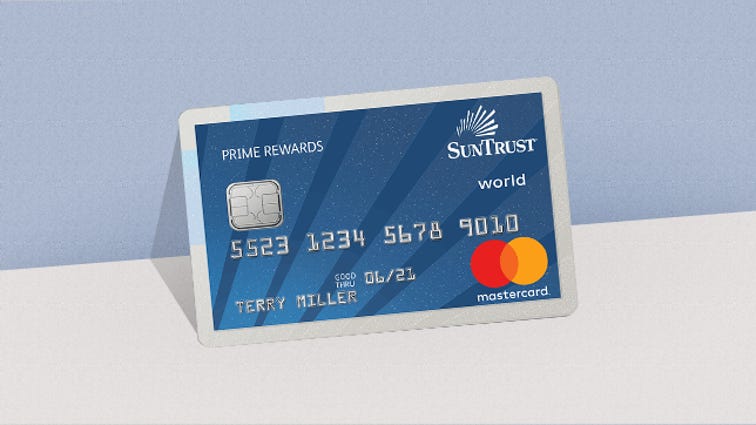Best no-balance-transfer-fee credit cards – CNET
No-balance-transfer-fee cards can help you pay down debt faster without worrying about high-interest rates or transfer fees.
No-balance-transfer-fee cards can help you pay down debt faster without worrying about high-interest rates or transfer fees.
If you’re facing an uphill battle against credit card debt, a balance-transfer credit card can offer a valuable reprieve. These cards let you move a balance from an existing, high-interest account to a new card with a low — or even a 0% introductory interest rate — for a set period of time, typically between 12 and 20 months. During the low-interest period, you can pay down the principal without getting buried under new interest.
What’s the catch? Most balance-transfer cards charge a transfer fee — usually between 3% and 5% — which can be a significant step in the wrong direction when you’re trying to settle your debt. But there are cards out there that don’t charge a transfer fee. The trade-off? A shorter low-interest introductory period. While most balance-transfer cards offer up to 20 months of low or no interest, no transfer fee cards typically only offer 12 months. But if you’re able to pay off your debt during that first year, you can save yourself around 3 to 4% (depending on the balance-transfer fee other cards charge) of the amount you owe.
If a no-balance-transfer-fee card makes sense for you, we’ve highlighted some of our top picks below, followed by two cards we also think are worth considering, even though they do feature a balance-transfer fee.
Best overall
Wings Financial Credit Union
Introductory APR: 12 months of 0% introductory APR on purchases and balance transfers
Standard APR: 8.15% – 18.00% variable APR, based on your creditworthiness
Balance-transfer fee: None
How long you have to make transfers: N/A
Annual fee: $0
Eligibility requirement: Make a donation of at least $5 to the Wings Financial Foundation
Wings Financial Credit Union is based in Minnesota, but you can join by making a $5 donation to the Wings Financial Foundation. After that, you can apply for the Wings Visa Platinum Credit Card*, which charges no annual or balance-transfer fees and offers 12 months of 0% introductory APR on balance transfers and purchases (8.15% to 18.00% variable APR thereafter).
Best overall runner-up
First Tech Federal Credit Union
Introductory APR: 12 billing cycles of 0% introductory APR on balance transfers
Standard APR: 6.99% – 18.00% variable APR, based on your creditworthiness
Balance-transfer fee: None
How long you have to make transfers: 90 days from account opening
Annual fee: $0
Eligibility requirement: Join the Computer History Museum ($15) or the Financial Fitness Association ($8)
First Tech Federal Credit Union is based out of San Jose, California, and catered initially to employees of tech companies in the Pacific Northwest. Today, you can become a member if you work for one of their partner companies or become a member of the Computer History Museum ($15 for an annual membership) or the Financial Fitness Association ($8 for an annual membership).
The First Tech Platinum Mastercard* credit card also offers 12 billing cycles of 0% introductory APR on balance transfers (6.99% to 18.00% variable APR thereafter) with no balance-transfer fees.
Best low fee alternative
US Bank
Introductory APR: 20 billing cycles of 0% introductory APR for balance transfers and purchases
Standard APR: 14.49% – 24.49% variable APR, based on your creditworthiness
Balance-transfer fee: $5 or 3%, whichever is greater
How long you have to make transfers: 60 days from account opening
Annual fee: $0
Eligibility requirement: N/A
The US Bank Visa Platinum Card* is one of our favorite balance-transfer credit cards, offering 20 billing cycles of 0% introductory APR (14.49% to 24.49% variable APR thereafter) after signing up. If you have a high balance, that long interest-free introductory period can offer major savings. The catch: US Bank charges you a 3% balance-transfer fee ($5 minimum), which can add up if you’re transferring a large balance.
Another option worth considering
Introductory APR: 3 years of introductory 3.25% variable APR on balance transfers
Standard APR: 11.24% – 21.24% variable APR, based on your creditworthiness
Balance-transfer fee: $0 for balance transfers made during the first 60 days account is open (then $10 or 3% of the amount of each transfer, whichever is greater)
How long you have to make transfers: 60 days from account opening
Annual fee: $0
Eligibility requirement: N/A
The SunTrust Prime Rewards Credit Card* doesn’t charge a balance-transfer fee per se ($0 for balance transfers in the first 60 days, then 3% or $10 minimum). Rather, it comes with three years of a relatively low APR — 3.25% variable — which serves as a flat transfer fee paid over a year. It’s worth noting that the effective rate will actually be lower than 3.25% variable, if you can pay down your balance.
Bottom line: If you need more time to pay off your debt, the SunTrust Mastercard Prime Rewards offers a balanced combination of a low interest rate and a long payback period.
FAQ
How do balance-transfer credit cards work?
When used correctly, balance-transfer credit cards function as a debt-financing tool. They can help you pay down existing high-interest credit card debt faster and for less.
When you transfer a balance, you move debt from one credit card to another. The best balance-transfer cards offer low or no interest for a set introductory period, allowing you to pay down your debt without worrying about high accruing interest. This introductory APR period generally lasts between 12 months and 21 months, giving you a significant period of time to pay off your balance before the interest rates increases.
While a few credit cards offer no-fee transfers, most balance-transfer cards charge you between 3% and 5% of the balance transferred. Typically, the longer the introductory 0% APR period, the higher the fee, and vice versa. So cards without a balance-transfer fee have shorter introductory APR periods, and those with transfer fees have longer introductory APR periods
Where can I find no-balance-transfer-fee cards?
We think the Wings Visa Platinum and First Tech Platinum cards are two of the best no-balance-transfer-fee cards around. While both offer introductory APR offers, you will have to pay between $5 – $15 to become a member. This fee is relatively small compared to typical balance-transfer rates, though. To compare, let’s say you’re transferring $5,000 in credit card debt — a card with a 3% fee would charge you $150 to do so, while the Wings Visa Platinum and First Tech Platinum cards would only require a membership fee under $20.
That said, if you’re already a member of a credit union, it may be worth asking if it offers a balance-transfer card with a 0% introductory APR period and no balance-transfer fee.
What are the benefits of a no-fee balance-transfer credit card?
A no-fee balance-transfer credit card lets you transfer a balance from one account to another without paying an upfront transfer fee, generally between 3% and 5%. The trade-off is a shorter introductory APR period for balance transfers.
A no-fee balance-transfer credit card with 0% APR offers a way to pay off high-interest credit card debt without paying a dime in interest or fees, but only if you can pay it off within one year. If you need more time, it might be better to consider a fee-based balance-transfer credit card with a longer low- or no interest introductory APR period.
How do I decide whether a no-fee or fee-based balance-transfer credit card is right for me?
The first step is to understand how large of a payment you can afford each month. Then, calculate how much you’ll pay in interest and fees with two or three different balance transfer-credit cards.
Generally speaking, if you can pay off your debt in around 12 to 15 months, the 3% you save with a no-fee balance-transfer credit card will be worth it. If it’s going to take you 17 to 18 months or longer, a card like the US Bank Visa Platinum may save you more money in interest payments, despite the 3% transfer fee ($5 minimum). If you need more than two years to pay down your balance, the SunTrust Mastercard Prime Rewards may be your best option. Don’t discount personal loans either — if you owe a significant amount and need a few years to repay your debt, you may be able to lock in a personal loan for a lower interest rate than the SunTrust Mastercard Prime’s introductory 3.25% variable APR on balance transfers (11.24% to 21.24% variable APR thereafter).
*All information about the Wings Visa Platinum Credit Card, First Tech Platinum Mastercard, U.S. Bank Visa Platinum Card, and the SunTrust Prime Rewards Credit Card has been collected independently by CNET and has not been reviewed by the issuer.
The editorial content on this page is based solely on objective, independent assessments by our writers and is not influenced by advertising or partnerships. It has not been provided or commissioned by any third party. However, we may receive compensation when you click on links to products or services offered by our partners.


 n “,”topic”:””,”ttag”:””,”variant”:””,”viewguid”:””,”event”:”listicle|image|1″,”correlationId”:””,”_destCat”:”https://www.wingsfinancial.com/credit-cards/platinum-card#rates”,”productName”:”Best overall”,”formatType”:”IMAGE”,”location”:”LIST”,”position”:1,”sku”:””,”dwLinkTag”:”article-body|listicle|image”,”selector”:”#article-body #listicle-af2fd161-5367-424f-bdde-290f481b8e1c .itemImage”}}” rel=”noopener nofollow” target=”_blank”>
n “,”topic”:””,”ttag”:””,”variant”:””,”viewguid”:””,”event”:”listicle|image|1″,”correlationId”:””,”_destCat”:”https://www.wingsfinancial.com/credit-cards/platinum-card#rates”,”productName”:”Best overall”,”formatType”:”IMAGE”,”location”:”LIST”,”position”:1,”sku”:””,”dwLinkTag”:”article-body|listicle|image”,”selector”:”#article-body #listicle-af2fd161-5367-424f-bdde-290f481b8e1c .itemImage”}}” rel=”noopener nofollow” target=”_blank”>


 n “,”topic”:””,”ttag”:””,”variant”:””,”viewguid”:””,”event”:”listicle|image|2″,”correlationId”:””,”_destCat”:”https://www.firsttechfed.com/borrow/credit-cards/platinum”,”productName”:”Best overall runner-up”,”formatType”:”IMAGE”,”location”:”LIST”,”position”:2,”sku”:””,”dwLinkTag”:”article-body|listicle|image”,”selector”:”#article-body #listicle-eda07e4a-176d-4e09-9abd-3289f2ffaced .itemImage”}}” rel=”noopener nofollow” target=”_blank”>
n “,”topic”:””,”ttag”:””,”variant”:””,”viewguid”:””,”event”:”listicle|image|2″,”correlationId”:””,”_destCat”:”https://www.firsttechfed.com/borrow/credit-cards/platinum”,”productName”:”Best overall runner-up”,”formatType”:”IMAGE”,”location”:”LIST”,”position”:2,”sku”:””,”dwLinkTag”:”article-body|listicle|image”,”selector”:”#article-body #listicle-eda07e4a-176d-4e09-9abd-3289f2ffaced .itemImage”}}” rel=”noopener nofollow” target=”_blank”>


 n “,”topic”:””,”ttag”:””,”variant”:””,”viewguid”:””,”event”:”listicle|image|3″,”correlationId”:””,”_destCat”:”https://www.usbank.com/credit-cards/visa-platinum-credit-card.html”,”productName”:”Best low fee alternative”,”formatType”:”IMAGE”,”location”:”LIST”,”position”:3,”sku”:””,”dwLinkTag”:”article-body|listicle|image”,”selector”:”#article-body #listicle-e2e7a477-7125-433a-9ec6-55d771f00365 .itemImage”}}” rel=”noopener nofollow” target=”_blank”>
n “,”topic”:””,”ttag”:””,”variant”:””,”viewguid”:””,”event”:”listicle|image|3″,”correlationId”:””,”_destCat”:”https://www.usbank.com/credit-cards/visa-platinum-credit-card.html”,”productName”:”Best low fee alternative”,”formatType”:”IMAGE”,”location”:”LIST”,”position”:3,”sku”:””,”dwLinkTag”:”article-body|listicle|image”,”selector”:”#article-body #listicle-e2e7a477-7125-433a-9ec6-55d771f00365 .itemImage”}}” rel=”noopener nofollow” target=”_blank”>


 n “,”topic”:””,”ttag”:””,”variant”:””,”viewguid”:””,”event”:”listicle|image|4″,”correlationId”:””,”_destCat”:”https://www.suntrust.com/credit-cards/prime-rewards”,”productName”:”Another option worth considering”,”formatType”:”IMAGE”,”location”:”LIST”,”position”:4,”sku”:””,”dwLinkTag”:”article-body|listicle|image”,”selector”:”#article-body #listicle-7313a819-d4a4-4720-9d32-367ed1cb9176 .itemImage”}}” rel=”noopener nofollow” target=”_blank”>
n “,”topic”:””,”ttag”:””,”variant”:””,”viewguid”:””,”event”:”listicle|image|4″,”correlationId”:””,”_destCat”:”https://www.suntrust.com/credit-cards/prime-rewards”,”productName”:”Another option worth considering”,”formatType”:”IMAGE”,”location”:”LIST”,”position”:4,”sku”:””,”dwLinkTag”:”article-body|listicle|image”,”selector”:”#article-body #listicle-7313a819-d4a4-4720-9d32-367ed1cb9176 .itemImage”}}” rel=”noopener nofollow” target=”_blank”>


